Joe Hackman, Salford
aj_hackman@yahoo.com
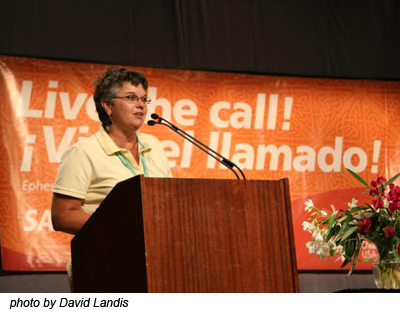 I’m a young(er) adult. And like many of my peers, I often bemoan how our tradition often
I’m a young(er) adult. And like many of my peers, I often bemoan how our tradition often
seems more interested in studying the past than dreaming of the future. However, a week spent in San Jose, CA as a delegate has helped to re-frame a few past perceptions.
I believe the Adult Delegate Assembly was a time of soul formation for the new denomination. Remember, we are only six years old! As we discussed resolutions pertaining to health care, creation care, and ecumenism, it was evident that the soul of this new denomination continues to take shape. The decisions made at these sessions will determine how future generations understand themselves as a church, and will inform how we dream about our future.
Besides delegate sessions, I was encouraged by speakers in both the adult and youth worship services. Shane Hipps, a first generation Mennonite from Arizona, was one of these speakers. On Thursday morning, Shane shared pieces of his life journey that have led him to Anabaptism. Towards the end of his inspiring talk, Shane offered this lament: “I wish I didn’t have to work so hard to find you.†This phrase has stuck with me over the last few weeks. I hear it replayed in my head virtually every day. Why was it that Shane had to look so hard to find us? Shane grew up in a Christian home in North America.
Yet by the time he was an adult, his only encounter with Anabaptism was from sitting in his mother-in-law’s Amish decorated living room. Shane’s story was just one of a few I heard through speakers and conversations of how North American Christians are looking hard to find people like us. They wish a Christian group existed that believed in the centrality of Jesus, in the power of community, and in the possibility of peace. But they simply don’t know we exist. The way of life that we have been striving to practice throughout the last 500 years simply remains a hidden treasure that much of the Christian church would love to find.
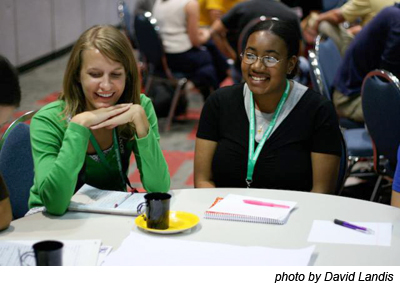 San Jose was a place to find encouragement and form conviction. I’m encouraged that our denominational leaders are teaching us to honor and learn from valuable parts of our past; but also, they make it clear that we are called to boldly walk into a future that might look very different from our past. And I’m convicted to sing a favorite song of my childhood: “Hide it under a bushel, No! I want to let it shine.†Many North American Christians are in search of a faith practiced from our perspective. And they should not have to look so hard to find it.
San Jose was a place to find encouragement and form conviction. I’m encouraged that our denominational leaders are teaching us to honor and learn from valuable parts of our past; but also, they make it clear that we are called to boldly walk into a future that might look very different from our past. And I’m convicted to sing a favorite song of my childhood: “Hide it under a bushel, No! I want to let it shine.†Many North American Christians are in search of a faith practiced from our perspective. And they should not have to look so hard to find it.

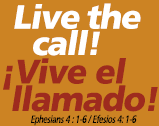 I was looking forward to San Jose for several reasons, some more noble than others. Coming from rural Vermont, I wanted to watch a big city fireworks display on July 4th, sing hymns in a gathering with more than two tenors, and take in some great workshops.
I was looking forward to San Jose for several reasons, some more noble than others. Coming from rural Vermont, I wanted to watch a big city fireworks display on July 4th, sing hymns in a gathering with more than two tenors, and take in some great workshops.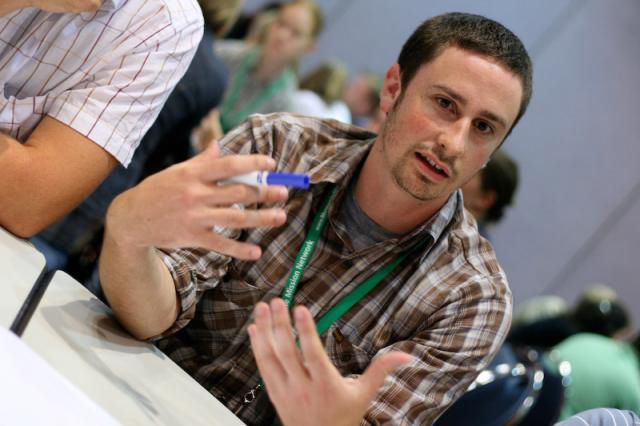
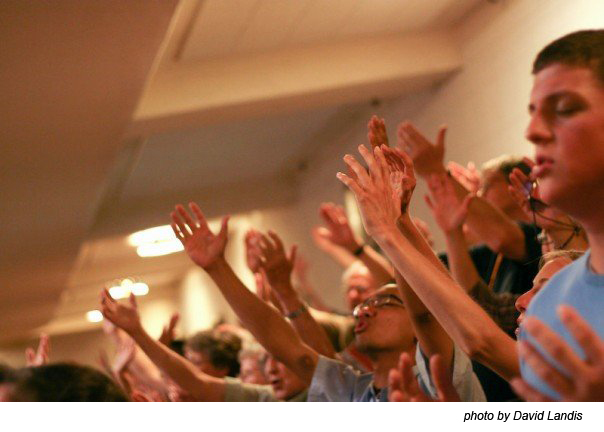
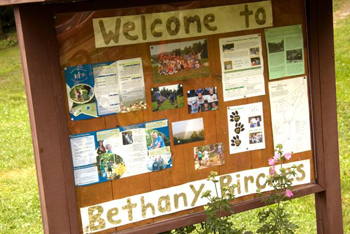 One word can make a difference! In a former role, I vividly remember the day I misread my boss’s handwriting and typed “now†instead of “not†in a letter to the FDA. It almost cost me my job and my company significant credibility.
One word can make a difference! In a former role, I vividly remember the day I misread my boss’s handwriting and typed “now†instead of “not†in a letter to the FDA. It almost cost me my job and my company significant credibility.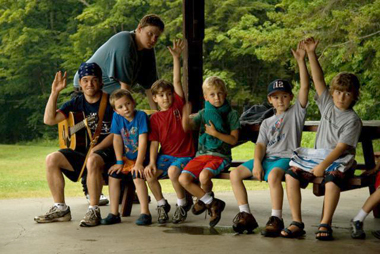 And over the past five years we’ve been sharing their stories. Intersections has featured many stories of how these organizations have touched lives in the name of Christ. Over the years articles with tiles such as “A Moment of Grace,†“Help for the Least of These,†“Counting Blessings,†“Faith Walk Leads to Holy Moment in CD Pond,†“Entertaining Angels,†“Repentance and Renewal in Zurich and Beyond,†“Anatomy of a Calling,†“Walking the Talk,†“Neighbor Helping Neighbor,†“Vigil for Peacemakers,†and “The Gospel is Our Daily Mission,†belie the stuff of ministry, not just business.
And over the past five years we’ve been sharing their stories. Intersections has featured many stories of how these organizations have touched lives in the name of Christ. Over the years articles with tiles such as “A Moment of Grace,†“Help for the Least of These,†“Counting Blessings,†“Faith Walk Leads to Holy Moment in CD Pond,†“Entertaining Angels,†“Repentance and Renewal in Zurich and Beyond,†“Anatomy of a Calling,†“Walking the Talk,†“Neighbor Helping Neighbor,†“Vigil for Peacemakers,†and “The Gospel is Our Daily Mission,†belie the stuff of ministry, not just business.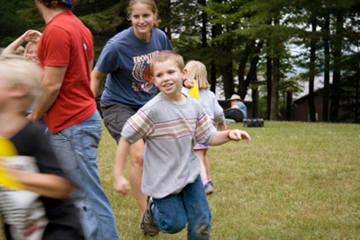 The transition of language, from “Conference Related Organizations†to “Conference Related Ministries,†is one small way that Franconia Conference can recognize and continue to build the integrity of these relationships into relationships that transcend administrative paperwork and into living and vital partnerships of joining hands and hearts to do the work which Christ is calling us all to in this region and in this world.
The transition of language, from “Conference Related Organizations†to “Conference Related Ministries,†is one small way that Franconia Conference can recognize and continue to build the integrity of these relationships into relationships that transcend administrative paperwork and into living and vital partnerships of joining hands and hearts to do the work which Christ is calling us all to in this region and in this world.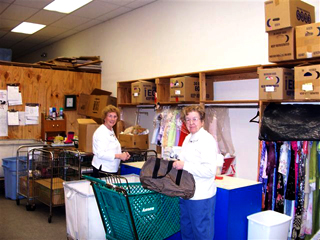 Care & Share Shoppes, Inc. began its mission here in the Souderton Center on November 3, 1975. This was a vision that came to fruition by Wayne Clemens, Norman and Janet Vincent, Bob Kratz, Harold and Myrtle Mininger, and the late Walton Hackman. By April 10, 1976, the first $10,000 check was given to Russell Musselman, Franconia Mennonite Conference treasurer, who handed it to John Hostetler, Mennonite Central Committee Material Aid Director.
Care & Share Shoppes, Inc. began its mission here in the Souderton Center on November 3, 1975. This was a vision that came to fruition by Wayne Clemens, Norman and Janet Vincent, Bob Kratz, Harold and Myrtle Mininger, and the late Walton Hackman. By April 10, 1976, the first $10,000 check was given to Russell Musselman, Franconia Mennonite Conference treasurer, who handed it to John Hostetler, Mennonite Central Committee Material Aid Director.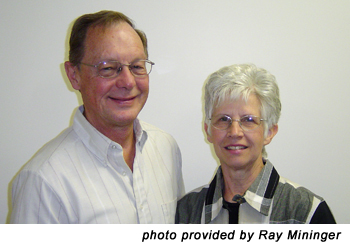 From 1976 to present, we have contributed over $8,000,000 to MCC. It is because of our mission and the support of our community that this has been possible. Our Board of Directors and General Manager oversee the work of the three thrift stores and Ten Thousand Villages. Each shop has an advisory team. This team provides support for the manager, makes suggestions about the operation of the shoppe, and gives the shoppe team advice about new or on-going projects in the shoppe. In Montgomery Newspapers’ recent Reader’s Choice awards we were voted the 2007 #1 Thrift Store Winner.
From 1976 to present, we have contributed over $8,000,000 to MCC. It is because of our mission and the support of our community that this has been possible. Our Board of Directors and General Manager oversee the work of the three thrift stores and Ten Thousand Villages. Each shop has an advisory team. This team provides support for the manager, makes suggestions about the operation of the shoppe, and gives the shoppe team advice about new or on-going projects in the shoppe. In Montgomery Newspapers’ recent Reader’s Choice awards we were voted the 2007 #1 Thrift Store Winner.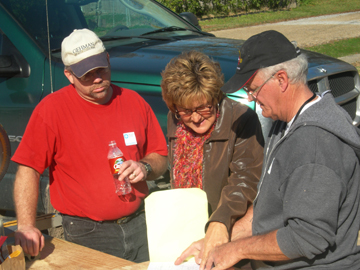 My husband and I are retired from full-time occupations and are now busy with volunteer church and community activities. Shouldn’t we be relaxing more, traveling more? We are getting older and some things are harder for us, but we still have skills and expertise that could be used.
My husband and I are retired from full-time occupations and are now busy with volunteer church and community activities. Shouldn’t we be relaxing more, traveling more? We are getting older and some things are harder for us, but we still have skills and expertise that could be used.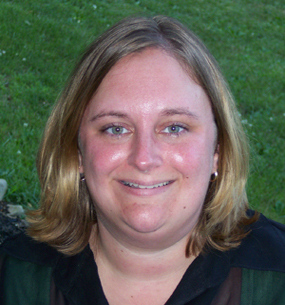 I was eight years old, but remember the moment clearly. The table at the front of the sanctuary was set, and the Alpha congregation was silently praying. I tried to pray, but was overwhelmed by the stirring within and around me compelling me to go to forward. I followed the movement of the Spirit and left my chair. Although my parents said I could not take communion and had to wait until I was older and baptized, my need to follow the pull of Love was strong. I walked over to my pastor, knelt down next to him, and whispered, “Uncle Henry, I love Jesus and Jesus loves me. I know I’m young and not baptized, but I want to follow Jesus and I need to be a part of Christ and this church. Please, can I take communion?â€
I was eight years old, but remember the moment clearly. The table at the front of the sanctuary was set, and the Alpha congregation was silently praying. I tried to pray, but was overwhelmed by the stirring within and around me compelling me to go to forward. I followed the movement of the Spirit and left my chair. Although my parents said I could not take communion and had to wait until I was older and baptized, my need to follow the pull of Love was strong. I walked over to my pastor, knelt down next to him, and whispered, “Uncle Henry, I love Jesus and Jesus loves me. I know I’m young and not baptized, but I want to follow Jesus and I need to be a part of Christ and this church. Please, can I take communion?â€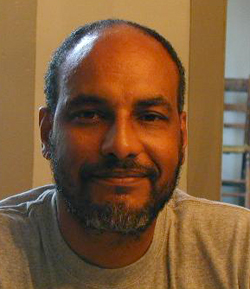 Pastor Jon Moore wrestled with the idea of becoming an ordained pastor. He started attending Bristol Mennonite Church (which became New Beginnings Community Church soon afterward) in May of 1986, through a relationship with Raymond Jackson, the congregation’s pastor at the time. Moore gave his first sermon in August that year and was later appointed as a chairperson to the administration council in December.
Pastor Jon Moore wrestled with the idea of becoming an ordained pastor. He started attending Bristol Mennonite Church (which became New Beginnings Community Church soon afterward) in May of 1986, through a relationship with Raymond Jackson, the congregation’s pastor at the time. Moore gave his first sermon in August that year and was later appointed as a chairperson to the administration council in December.